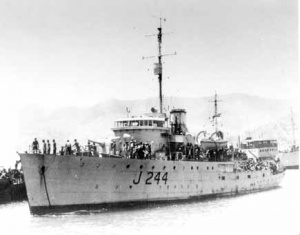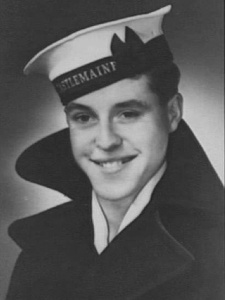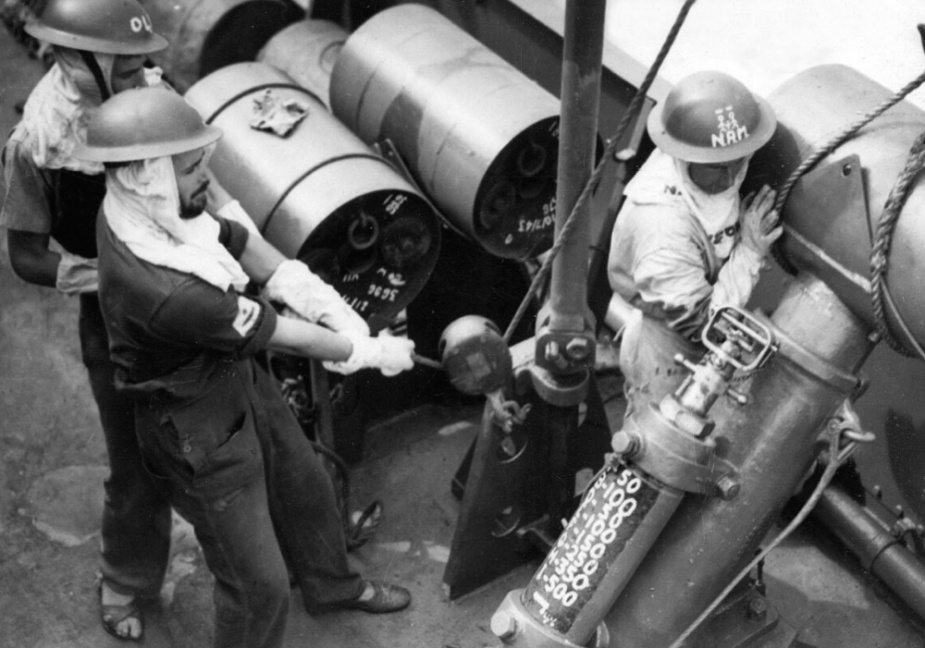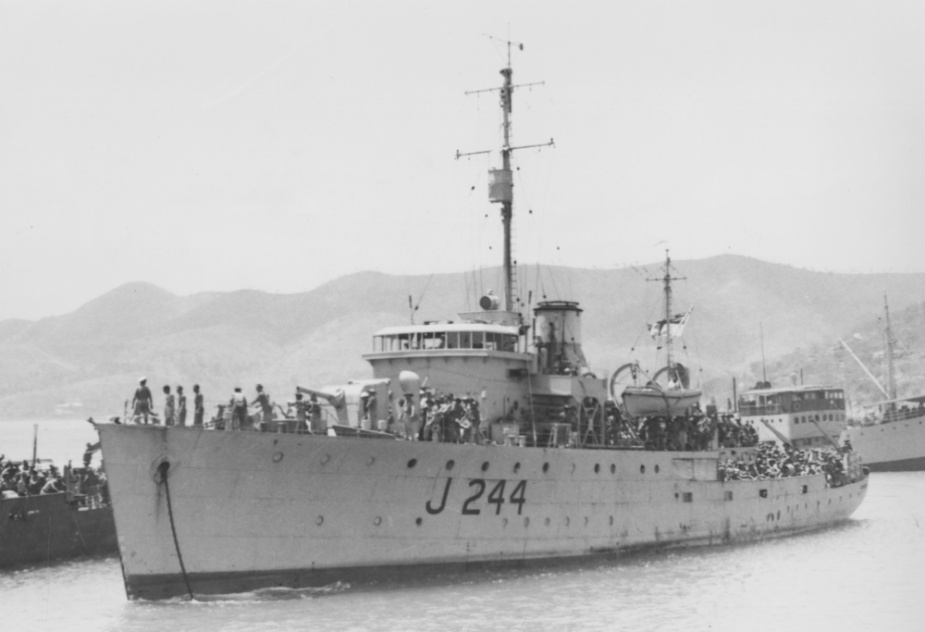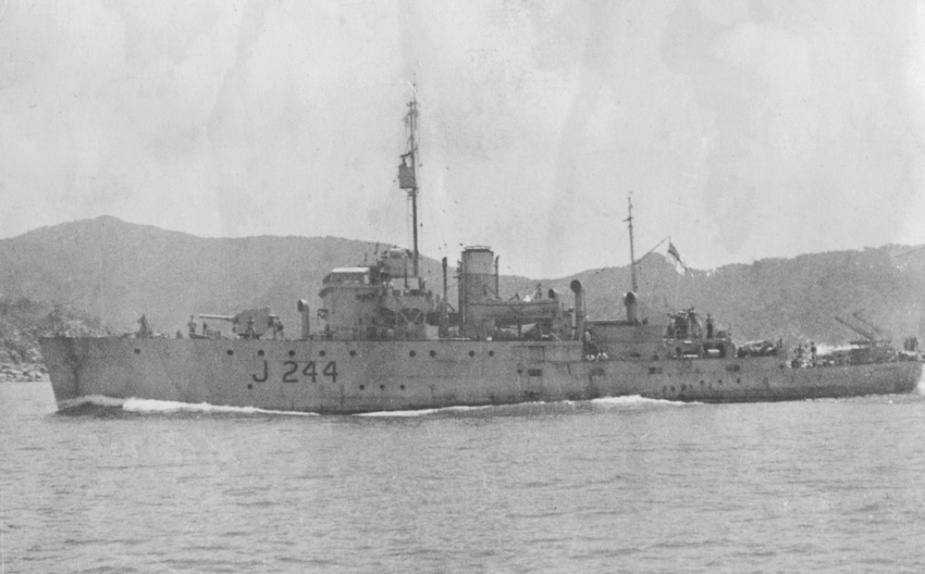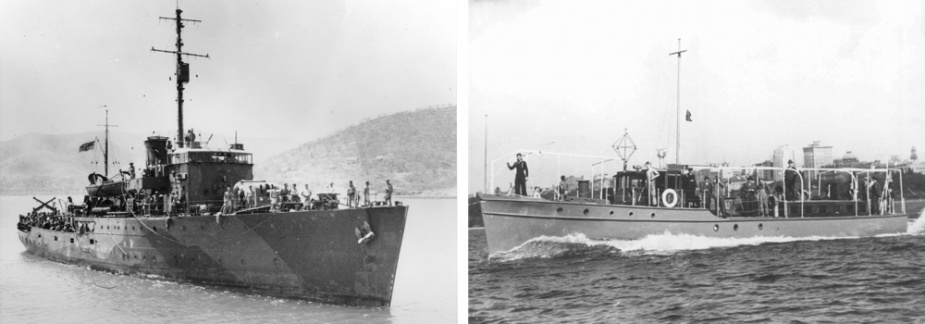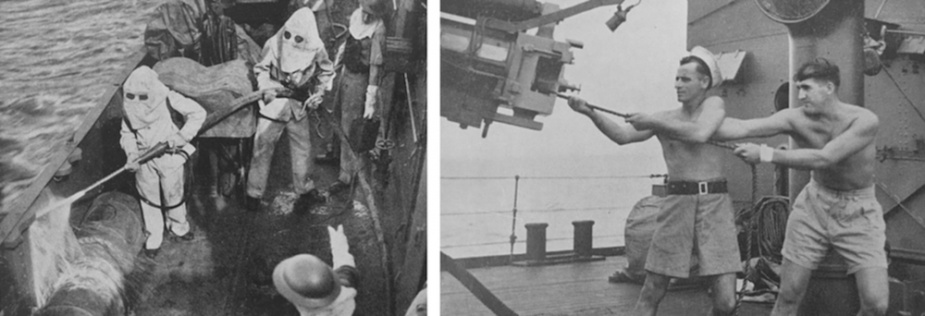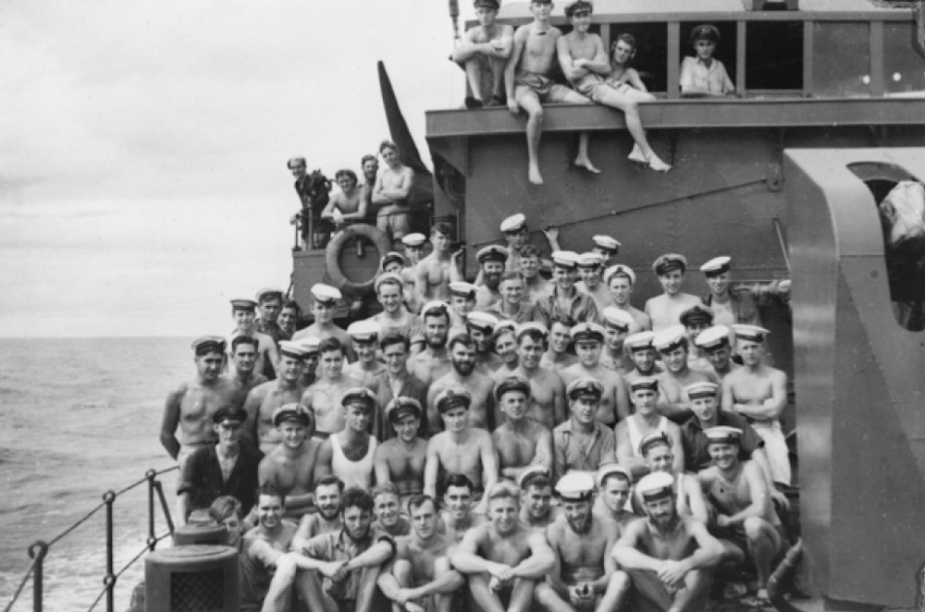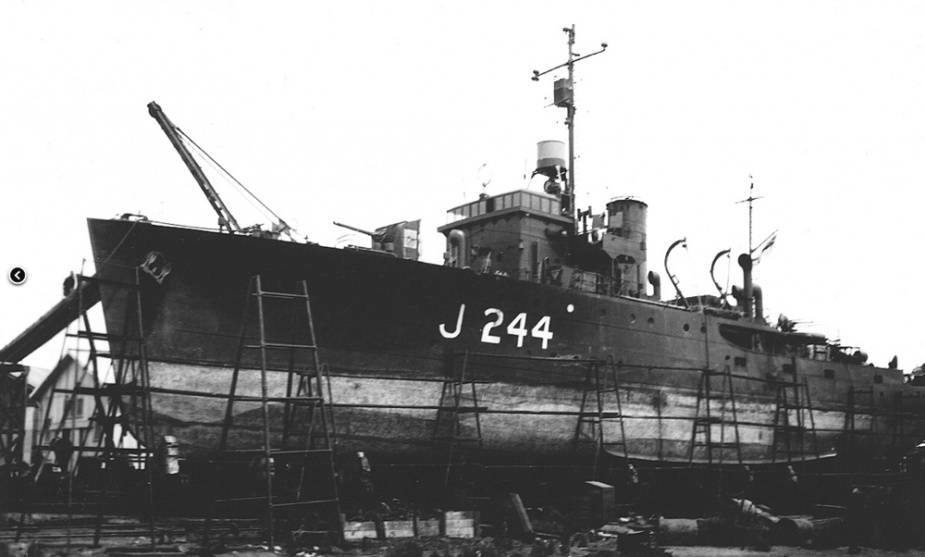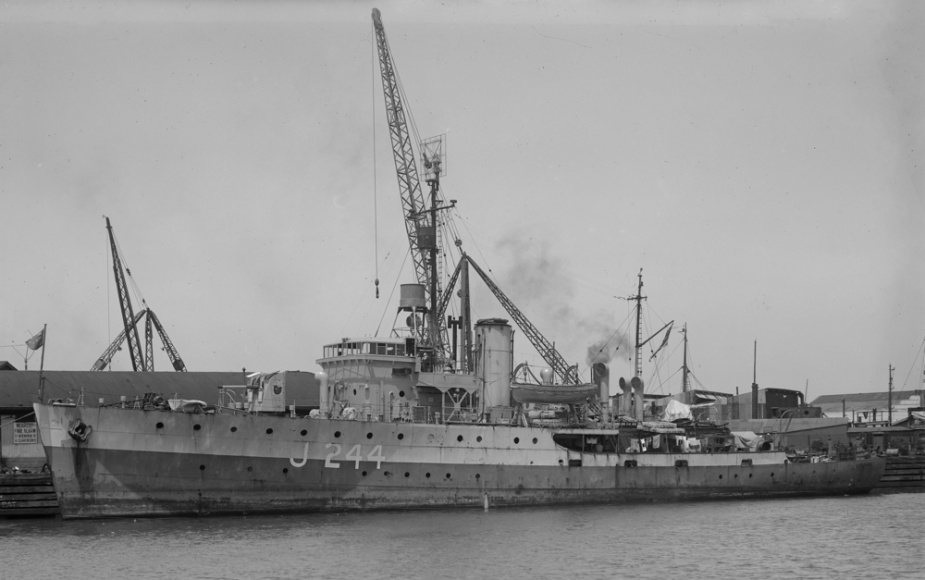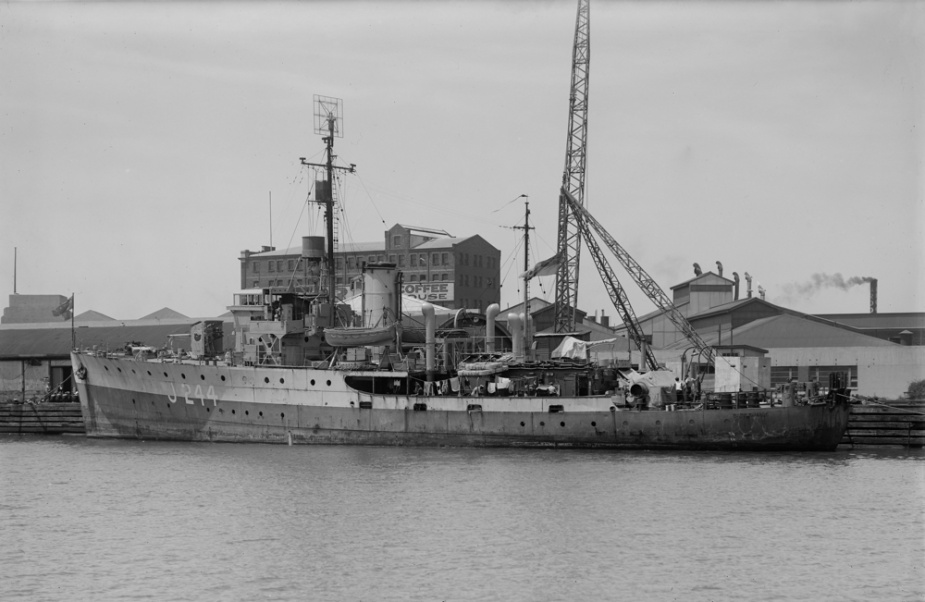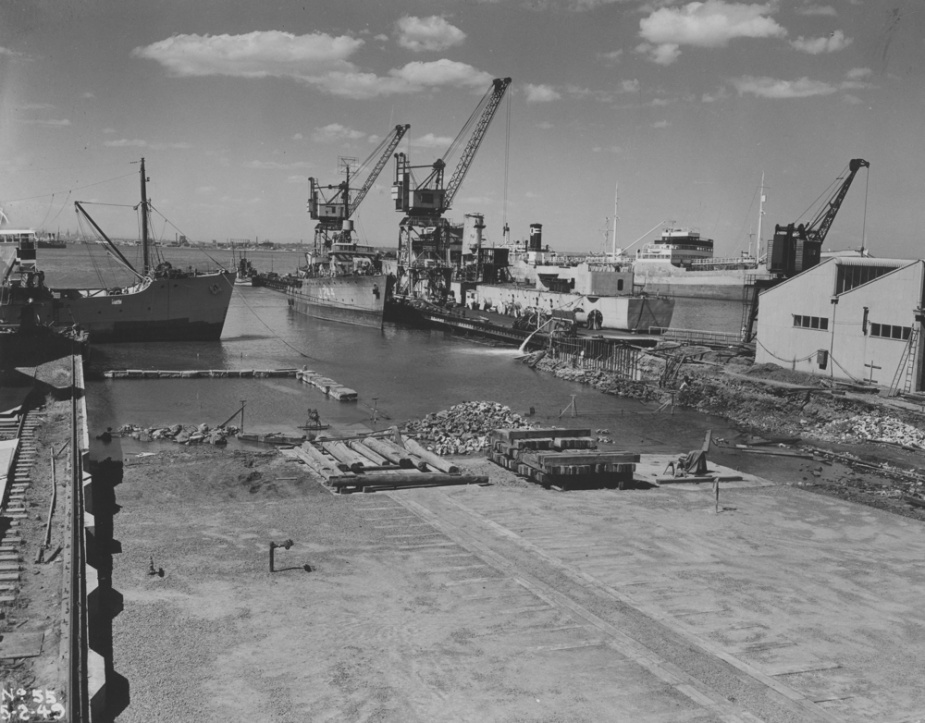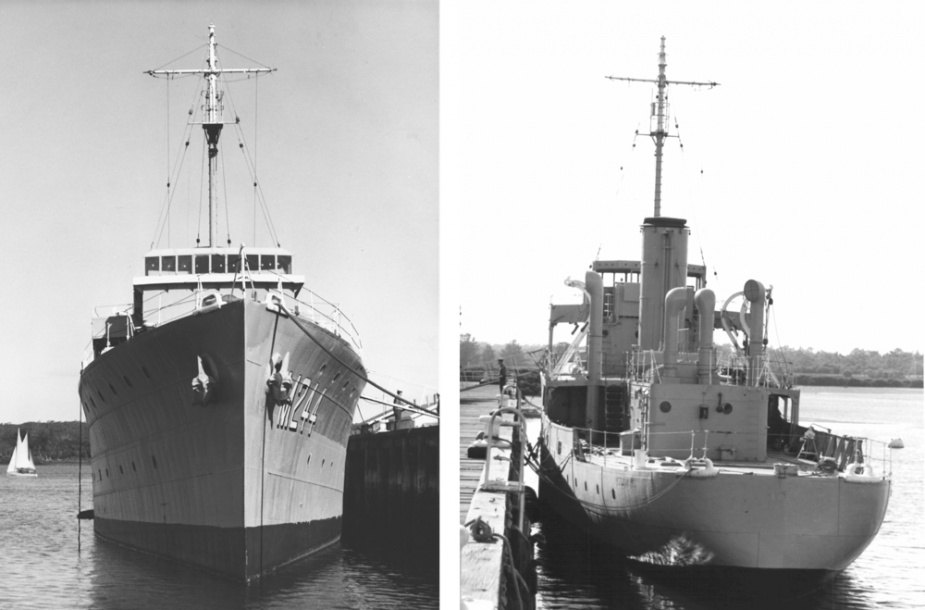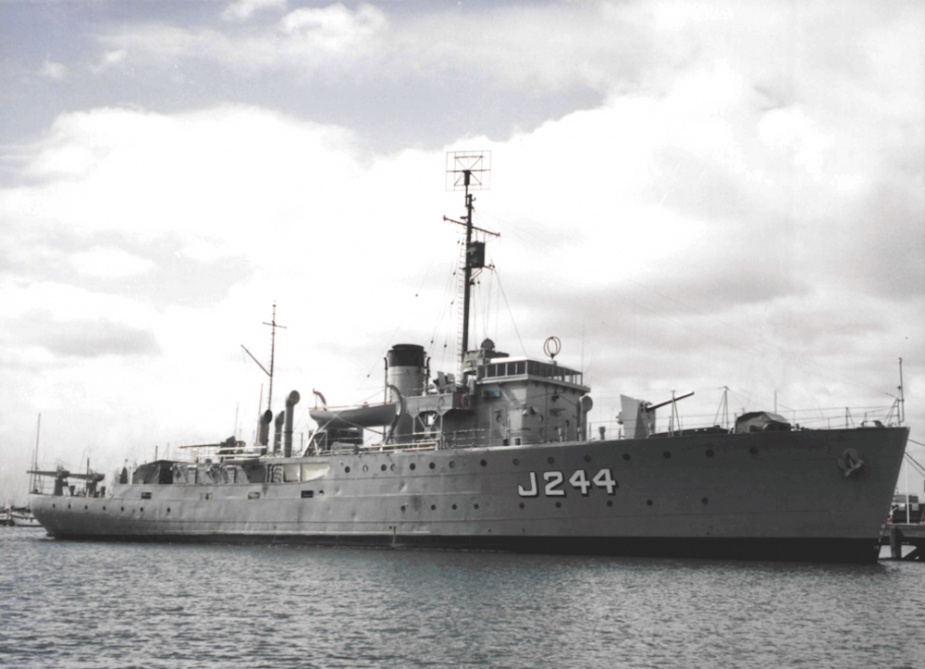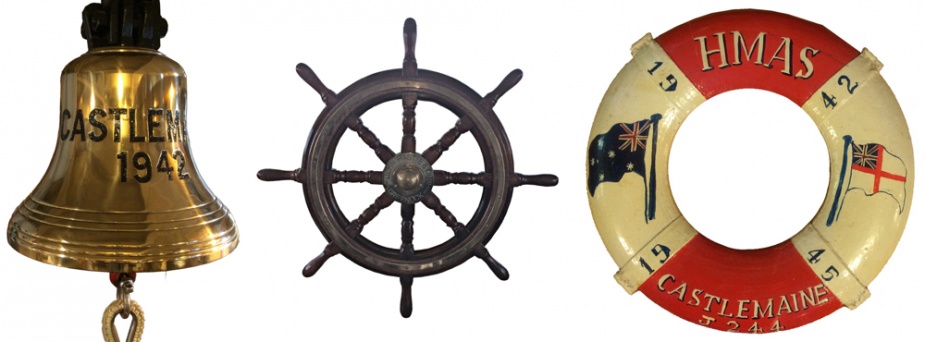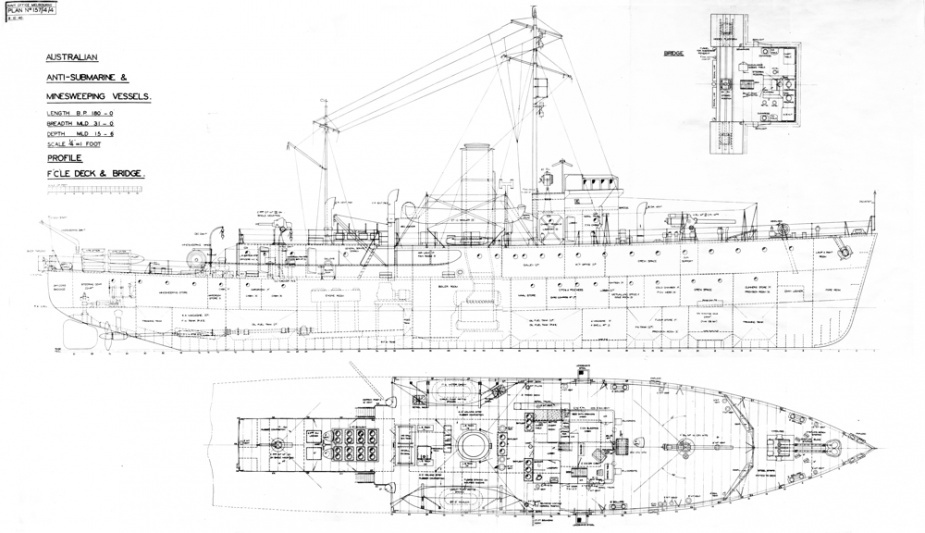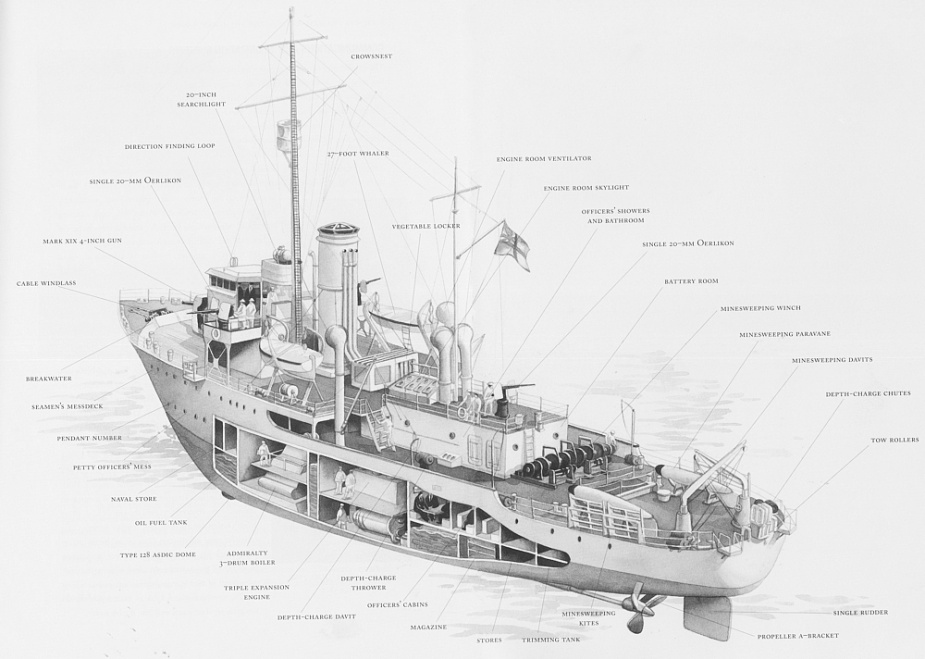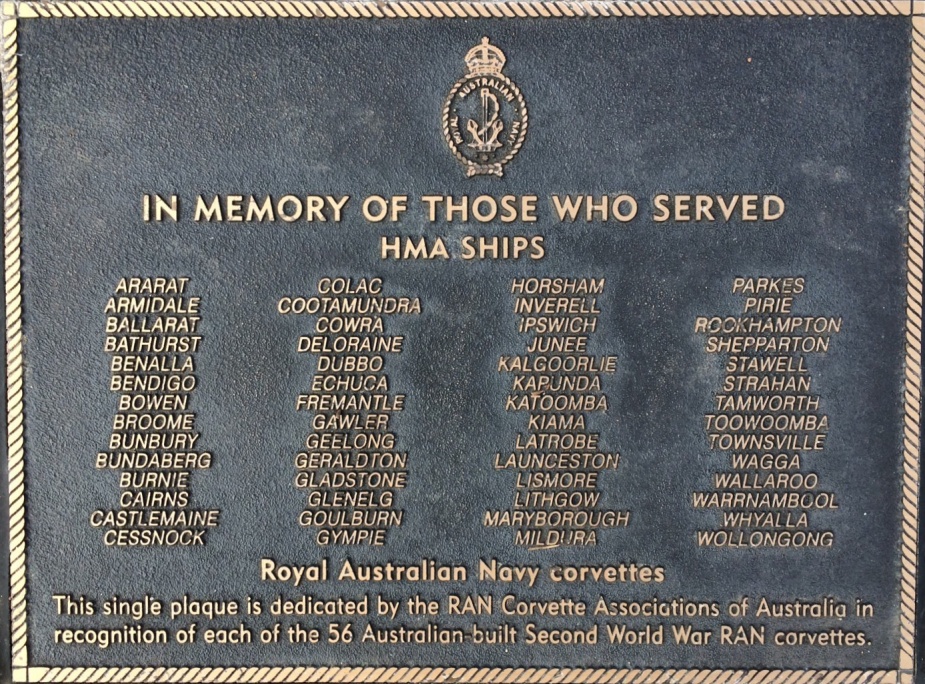HMAS Castlemaine
| Class |
Bathurst Class |
|---|---|
| Type |
Australian Minesweeper |
| Pennant |
J244 |
| Builder |
Williamstown Dockyard, Melbourne |
| Laid Down |
17 February 1941 |
| Launched |
7 August 1941 |
| Launched by |
Mrs Menzies, wife of the Prime Minister |
| Commissioned |
17 June 1942 |
| Decommissioned |
14 December 1945 |
| Dimensions & Displacement | |
| Displacement | 650 tons |
| Length | 186 feet |
| Beam | 31 feet |
| Draught | 8 feet 6 inches |
| Performance | |
| Speed | 15.5 knots |
| Complement | |
| Crew | 85 |
| Propulsion | |
| Horsepower | 2000 |
| Armament | |
| Guns |
|
| Other Armament | 3 x Oerlikons |
| Awards | |
| Battle Honours | |
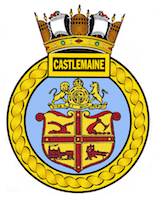
HMAS Castlemaine was one of sixty Australian Minesweepers (commonly known as corvettes) built during World War II in Australian shipyards as part of the Commonwealth Government's wartime shipbuilding programme. Twenty were built on Admiralty order but manned and commissioned by the Royal Australian Navy (RAN). Thirty six were built for the RAN and four for the Royal Indian Navy.
Castlemaine was constructed at Williamstown Naval Dockyard at a cost of £250,000. She was laid down on 17 February 1941 and launched, with some difficulty, on 7 August 1941 by Mrs RG Menzies, wife of the then Prime Minister. Cold weather had set hard the tallow on the slipway and the obstinate ship refused to budge. After 20 minutes she was eventually pulled into the water by the tug Keera.
Castlemaine commissioned at Melbourne on Wednesday 17 June 1942 under the command of Lieutenant Commander Philip J Sullivan RANR(S). On 26 June Castlemaine sailed in company with HMAS Rockhampton escorting convoy OC5 from Melbourne to Sydney where they arrived on 28 June. There, Castlemaine made preparations for her shakedown cruise and working up exercises that were undertaken in waters off Broken Bay.
On successful completion of work-ups Castlemaine began escorting convoys between Sydney and Melbourne until she sustained damage in a collision with a Manly ferry in Sydney Harbour on the night of 11 August 1942. Repairs were completed at Cockatoo Island Dockyard between 14 August and 22 August, after which she resumed escort duties arriving in Townsville on 30 August 1942.
Thereafter, Castlemaine was engaged in escorting vessels from Townsville to Port Moresby before receiving orders to proceed to Darwin where she arrived on 5 October 1942 with the Dutch troop transport MV Van Heutsz under her escort. On 7 October she escorted the MV Sibigo to Thursday Island before returning to Darwin the following day. Further escort duties followed; on 13 October Castlemaine escorted the MV Joseph Lane from Darwin to Thursday Island, returning to port on 19 October, and on 5 November she rendezvoused with MV Darvel at sea before escorting her into Darwin Harbour. There, Castlemaine’s captain, received orders to prepare to take part in the hazardous task of supporting the Australian and Allied troops engaged in guerrilla operations against the Japanese occupation forces in Timor. Later that day Castlemaine’s crew loaded military mail and stores, before embarking a Dutch military officer, four war correspondents and sailing the following day for Betano, Timor, where she arrived on the evening of 7 November. After embarking a number of troops and refugees, she returned to Darwin on 9 November.
On 24 November 1942 Allied Land Forces Headquarters approved the relief/reinforcement of the Australian 2/2nd Independent Company which was holding out in Japanese occupied Timor. The withdrawal of 150 Portuguese civilians was also approved and consequently plans were made in Darwin for HMA Ships Castlemaine, Armidale (Lieutenant Commander DH Richards, RANR (S)) and Kuru (Lieutenant JA Grant, RANR), a shallow draught, 76 foot wooden motor vessel, to effect the relief operation which was code named Operation HAMBURGER.
The proposal was for the three ships to each make two separate runs into Betano. The first run was planned for the night of 30 November-1 December. HMAS Kuru sailed from Darwin at 22:30 on 28 November preceding the two corvettes. She was delayed en route due to adverse weather conditions and did not reach Betano until 23:45 on 30 November.
Meanwhile Castlemaine, in company with Armidale, had left Darwin at 00:42 on 29 November. In Armidale were 61 Near East Indies troops, two Dutch officers and three members of the 2nd AIF. At 09:15 on the morning of 30 November, when 120 miles from their destination, the two corvettes came under aerial attack from a single enemy aircraft. Although neither ship sustained any damage or casualties, concerns were raised that the mission may have been compromised. The attack was duly reported and orders were received to press on, with an assurance that Beaufighter aircraft had departed to provide cover. The ships were subjected to two more air attacks, each by formations of five bombers which dropped no less than 45 bombs and machine gunned the ships from a low level. According to Armidale, the promised Beaufighters arrived in time to drive off the bombers and both ships escaped serious damage or injury, reaching Betano at 03:30 on 1 December. Disappointingly there was no sign of Kuru and a decision was made to return to sea and make as much ground to the south as possible before daylight.
Meanwhile, Kuru, with no knowledge of the attacks affecting the arrival of the corvettes, embarked 77 Portuguese before sailing without delay. At dawn, Kuru was sighted by Castlemaine 70 miles south of Betano and subsequently closed to conduct the transfer of her passengers to the corvette. Following the rendezvous, Kuru received orders from Darwin to return to Betano and complete the mission that night. No sooner was the personnel transfer complete when enemy bombers again appeared causing Kuru to run for cover in a rain squall.
As the senior officer, Castlemaine’s captain, Commander Sullivan, quickly appraised the situation. Kuru had orders to return to Betano, Armidale had troops on board to be landed there, and, to further complicate matters, a signal had been received to search for two downed airmen from a Beaufighter some 150 miles to the south-east. Sullivan’s preference was to exchange passengers with Armidale so Castlemaine might escort Kuru back to Timor, however, the presence of enemy aircraft ruled this out. Consequently Armidale and Kuru were ordered to return to Betano to complete the troop operation while Castlemaine went in search of the downed airmen en route back to Darwin.
As Kuru and Armidale steamed northwards they both came under fierce aerial attack becoming separated in the process. For almost seven hours Kuru dodged bombs suffering minor damage to her engine and losing her assault boat that was under tow. Grant reported the damage to Darwin but was told that the operation was to be carried through. This instruction was later rescinded when the presence of Japanese cruisers were reported approaching the area. Kuru then shaped a course for Darwin.
In the intervening period Armidale was sunk in position 10 degrees south, 126 degrees 30 minutes east, about 70 miles SSE of Betano.
At 3:15 pm on 1 December nine enemy bombers, three fighters and one float plane attacked Armidale which was struck by two torpedoes and possibly one bomb. She turned over and sank in less than four minutes. During the action one bomber and one fighter were seen to crash into the sea some distance from the ship, victims of the ship’s anti-aircraft fire. The bomber was downed by Ordinary Seaman Edward Sheean, who remained at his post at the aft Oerlikon gun as the ship sank.
Castlemaine returned safely to Darwin at 09:39 on 2 December and Kuru made port at 17:26 the following day. By then doubts concerning Armidale’s safety had arisen and it was feared she may have been sunk. At 10:15 on 5 December a boat carrying approximately 20 survivors was sighted by searching aircraft about 115 miles west of Bathurst Island and HMAS Kalgoorlie was ordered to render assistance, arriving on 6 December, having herself come under intense aerial attack. The rescued men were taken back to Darwin for medical treatment and hospitalisation, before Kalgoorlie resumed the search for other survivors spotted in a whaler and on a makeshift raft from the air. Those in the whaler were recovered late in the afternoon of 9 December but tragically the raft was not seen again. Forty-nine men survived Armidale’s sinking and subsequent loss, but more than 100 were lost.
On 2 December Castlemaine resumed escort duties between Darwin and Thursday Island. On 15 December, while escorting the merchant ships Period and James Cook from Thursday Island to Darwin, a Japanese aircraft scored a direct hit on Period, causing casualties (four of which were fatal). Twice more that day and once the next day the ships came under air attack. The attacks were repulsed by Castlemaine's anti-aircraft fire and the convoy reached Darwin without further damage or casualties.
After the force in Timor was withdrawn early in 1943, Castlemaine continued to operate in northern Australian waters performing escort, minesweeping and general duties until December.
On 18 December 1943, Castlemaine was making independent passage to Cairns when, at around midnight, she was diverted to render assistance to convoy TN 192. Seven of the eight merchant vessels in the convoy, along with one of the escorts, HMAS Gladstone (I), had run aground on Bougainville Reef on the Great Barrier Reef. By the time Castlemaine arrived at dawn on 19 December, Gladstone had managed to refloat herself and was waiting for daybreak, just clear of the reef, in company with the other convoy escorts, HMA Ships Gympie (I) and Stawell (I). The vessels Colorado, Ambrose Bierce and City of Fortworth had also all managed to free themselves and, with Castlemaine and HMAS Lithgow arriving to assist, Gladstone detached just after 07:00 to escort the trio back to Cairns. Castlemaine assisted in disembarking troops and refloating the stricken vessels before proceeding back to Cairns that afternoon where she arrived shortly after 19:00 that evening.
From August 1944 Castlemaine was engaged in survey duties along the north coast of Australia. On completion of these duties she sailed for Morotai and the Philippines and then to Hong Kong, arriving there on 29 August 1945, where she took part in the Japanese surrender ceremony before carrying out minesweeping duties.
After some further minesweeping and survey work in northern Australia waters Castlemaine returned to Melbourne in November 1945 having steamed 117,000 miles on war service. There she was paid off into Reserve on 14 December 1945.
Following more than a decade in reserve, Castlemaine underwent a refit in 1958 before being transferred to HMAS Cerberus, Westernport, Victoria, for use as a stationary training ship for engine-room artificers. She was also used by the Seamanship School for training in the use of anchor work and genderal seamanship.
In 1971 Castlemaine was put up for disposal and presented to the Maritime Trust of Australia, Victoria for preservation as a museum ship. Today Castlemaine can be found lovingly restored at the Gem Pier, Williamstown, not far from where she was constructed. Each year she attracts many visitors from around the globe.
Note: This video is hosted on YouTube. Department of Defence users will not be able to view this video on the Defence Protected Network.
This cine film has been placed online as part of the Sea Power Centre - Australia's ongoing archival digitisation program.
Further reading
- 'Notable Service to the Empire: Australian Corvettes and the British Pacific Fleet,1944-45' by Hugh Campbell - published by Naval Historical Society of Australia Inc, Garden Island, 1995.
- 'The Corvettes: Forgotten Ships of the Royal Australian Navy' by Iris Nesdale - published by the author, October, 1982.
- 'Corvettes - Little Ships for Big Men' by Frank B Walker - published by Kingfisher Press, NSW, 1996.
- A short wartime cine film shot by renowned Australian War Correspondent Damien Parer may be viewed on the site of the Australian War Memorial on the following link: https://www.awm.gov.au/collection/F01812/
- http://hmascastlemaine.org.au/
- 'The Australian Centenary History of Defence Volume III, The Royal Australian Navy' edited by David Stevens, Oxford University Press, South Melbourne, Victoria, Australia, 2001.

